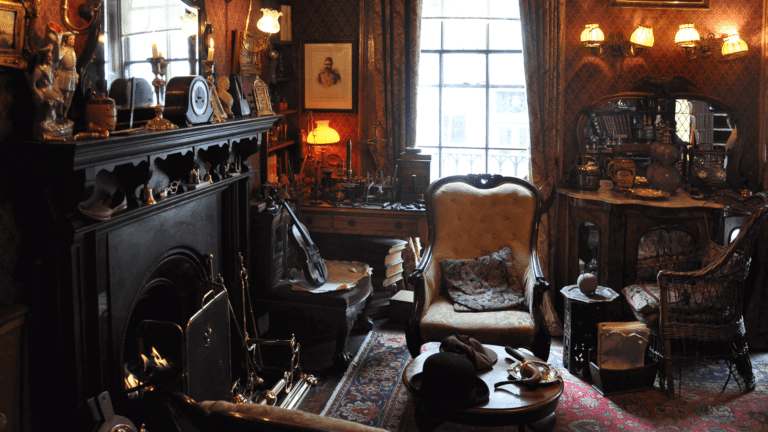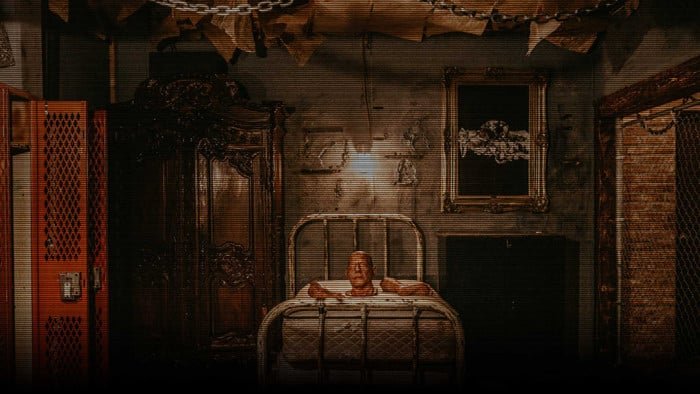Crazy escape room idea: What is an Escape Room?
There is an Escape room built in the Opera Theatre, where players had to run through these long corridors, visit artists’ rooms, and touch different theater things. The plot was based on a performance players had seen 2–3 days before embarking upon the game—a vivid representation of the concept of escape room.
Another Crazy Escape Room Idea and Escape Room Tips
Another crazy escape room idea was situated in a hospital. Players found themselves enveloped in it at night, surrounded by a plethora of fake zombies. It was a harrowing experience in a dark, cold environment—a perfect example for those seeking escape room tips on handling intense settings.
Other Interesting Locations of Escape Rooms: What are Escape Rooms?
- A barn sculpted to emulate a Western town aesthetic (Escape Maze, Peterborough, Ontario),
- A decommissioned military edifice (Room Escape Amsterdam),
- An antiquated, neglected structure (Breakroom, Vilnius, Lithuania),
- A historic stock exchange building (Sherlocked Mystery Experiences, Amsterdam),
Escape Rooms May Be Dangerous, But Are Generally Safe: Concept of Escape Room
Escape rooms, as a rule, prioritize safety. Even potentially perilous objects like knives, saws, or incendiary materials are most often replicas. Thus, even if one harbors intentions to inflict harm upon oneself or others, the concept of escape room safety measures will inhibit such actions.
The Presence of Oversight in Escape Rooms
There was an unfortunate incident involving a chemical reactant that instigated a fire in Poland. However, the crux of the issue was not intrinsic to the escape room per se but was attributable solely to supervisory negligence.
In escape rooms, consistent surveillance and managerial presence are assured. Thus, even if complications arise, expedited assistance is virtually guaranteed.
How to Create Your Own Escape Room: What is an Escape Room?
To craft your very own escape game—a masterstroke in the concept of escape room—adhere to the following structured steps:
- Decide on a Theme: Ordinarily, this is inspired by popular movies, television series, or literary works.
- Craft a Narrative: Delve deeply into what mission players are required to accomplish, the roles they will assume, and the underlying rationale for their confinement within the escape room—necessitating their quest for a route of egress.
- Design Puzzles: Contemplate judiciously on which puzzles to incorporate, their allotted duration, volume, and the various levels of complexity. An eclectic blend of puzzles enhances the richness of escape games; these can range from logical and mathematical to physical and visual exercises.
Note: The standard configuration encompasses 10–15 puzzles, each assigned a 5-minute resolution window. This would be beneficial for those seeking escape room tips on puzzle design.

Why Do People Engage in Escape Rooms? Survey Data Explores What are Escape Rooms
According to the scientific survey, the owners of escape rooms were asked what their inspiration was to start an escape room. About 65% of the survey respondents said that their inspiration came from playing in or learning about another escape room, especially from such famous places as SCRAP from Japan, Parapark in Budapest, Hinthunt in London and Escape the Room in NYC. Their inspiration came from a variety of sources. A few of them were inspired by adventure movies like the Indiana Jones series or horror films like Cube, Saw.More of them were inspired by prior forms of interactive media; exploring these sources paints a more robust history of the escape room phenomenon.
Who Participates in Escape Games? A Comprehensive Survey
About 37% of groups are groups of players over 21 about 14% of players are families with parents and children, while 19% are groups of players under 21. Corporate clients make up about 19% of the customers for escape rooms, and 11% of groups are couples out on a date. That said, in Asia, the Escape rooms are more likely to attract groups of only younger players (about 36% of users) than groups of adults (25%).
Source: Nicholson, S. (2015). Peeking behind the locked door: A survey of escape room facilities.
Theme of an Escape Game: A Comprehensive Survey
Horror themes are more popular in Asia, with 24% of the reported rooms having a Horror theme. The most popular theme in Europe is a specific time and place from the last century, while the rooms from Asia and the Americas, intriguingly, lean more towards modern-day settings.
Modern Era (2000-2015) 25%
Specific place and time (1900-2000) 24%
Other 16%
Specific place and time (1700-1900) 13%
Horror 13%
Fantasy 12%
Science / Laboratory 12%
Abstract: There is no theme 10%
Future / Technological 7%
Military 7%
Toy Room 3%
Cartoon/Anime 1%
Steampunk 1%
Seasonal (Christmas, Halloween, Easter, etc.) 1%
Source: Nicholson, S. (2015). Peeking behind the locked door: A survey of escape room facilities.
Concepts of Escape Rooms: A Deeper Dive
The most ubiquitous concept was, quite simply, to escape a room. About 16% of the rooms offered no narrative other than “What is an Escape Room?”, requiring participants to “Escape the Room.” Meanwhile, 30% focused on the concept of escaping a distinct location, thereby integrating a theme. Beyond this core concept of escape rooms, the motifs varied extensively, as elaborated in the subsequent table.
Overall Escape a Specific Unpleasant Place (Dungeon, Prison, Preschool, etc.) 30%
Abstract: There is no overarching narrative other than “Escape the Room” 16%
Investigate a Crime or Mystery 9%
Engage with the supernatural 8%
Solve the Murder 5%
Defuse the explosive device 5%
Be an Adventurer 4%
Gather Intelligence or Espionage 4%
Carry out a Heist 4%
Other 3%
Find the Missing Person 3%
Help Create Something (such as a cure, a potion, etc.) 2%
Military Operations 2%
Free another person or animal 2%
Survive! 1%
Source: Nicholson, S. (2015). Peeking behind the locked door: A survey of escape room facilities.


